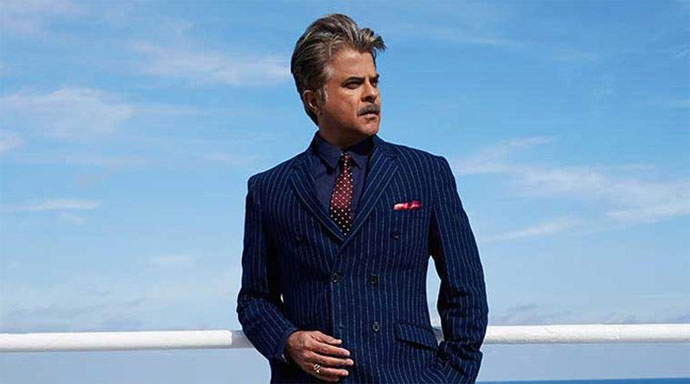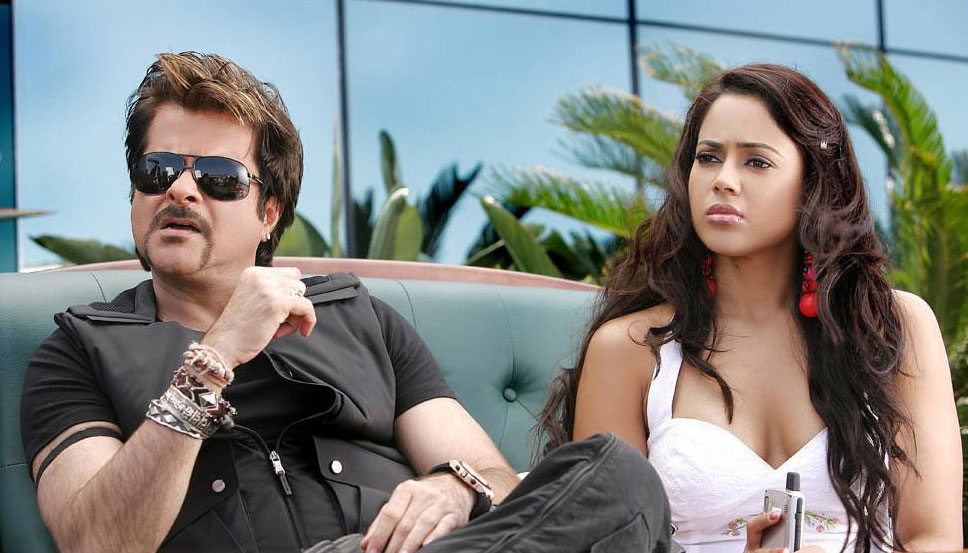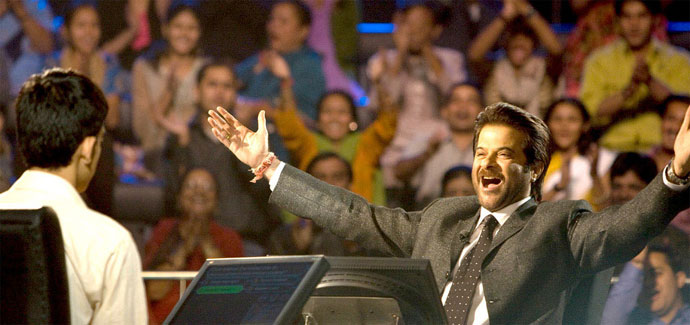One-two-ka-four: Age doesn't hold Anil Kapoor back

The two things that Bollywood loves the most are underdogs and comebacks. It has its own skewed definition of the two: underdog is anyone who you think would fail but ends up hitting the bullseye, and comeback is when someone, usually a star in transition, picks up a decent role that suits his/her stature and manages to get him/her critical acclaim if not commercial success after a spate of misfires. Bollywood is always on the look out to attribute either of these to someone. And lately it has been a rare opportunity to celebrate both of these in Anil Kapoor, the evergreen actor forced by circumstances to be the perpetual journeyman.
 |
| Anil Kapoor in a still from Dil Dhadakne Do. |
In the last three months, Kapoor has had two releases, Dil Dhadakne Do and Welcome Back, and while the films have earned mixed reviews, the actor, however, garnered all round praise. Kapoor’s middle-aged Delhi businessman act in Dil Dhadakne Do was one of the better things in the film that otherwise largely seemed to lose its grip when he was not on screen, and in the latter, the revisiting of the genial rogue number that has been perfected over the years was the highlight of an otherwise predictable film. The deftness with which Kapoor eased into two polar opposite characters from two different worlds as Kamal Mehra in Dil Dhadakne Do and Majnu Bhai in Welcome Back isn’t surprising. In fact, this is something that had come to be expected of Kapoor even at an early stage in his career but his roles in these two films, especially Dil Dhadakne Do, deliver on the potential he displayed decades back when he graduated into playing mature roles with greater ease than his contemporaries like Sunny Deol, Jackie Shroff or Sanjay Dutt. There was hardly any doubt about Kapoor’s acting prowess that was displayed with the effortlessness with which he balanced the role of a typical commercial Hindi cinema hero with something as complex as Lamhe (1991), where he not only played a character who ages from late teens to early 50s but also develops romantic feelings for a girl who is the daughter of a woman he once loved, or Eeshwar (1989) where his role of a person with autism who marries a widow with a young son spans over 60 years. None of his contemporaries were comfortable playing such roles and moreover, barring Jackie Shroff, who sometimes indulged in roles off the beaten track that could be considered experimental such as that in Kaash (1987), there were hardly any untried parts even within the realm of popular cinema for the 1980s regulars.
 |
| Anil Kapoor with Sameera Reddy in a still from Race. |
With such credentials, one would have expected Kapoor’s transition into playing what Bollywood calls strong supporting characters a breeze. Moreover, with Amitabh Bachchan easing into the senior bracket, he could have even created an entirely new genre of films where the main character could have been in an age-group between the Khans, Devgns and Kumars on one end and Bachchan or a Rishi Kapoor on the other. Unfortunately Kapoor, too, was subjected, albeit slightly ahead of time, to Bollywood’s standard "once-a-leading-man-now-in-the-wilderness-for-a-few-years" category. In the 2000s, post-Mohabbatein (2000) where the memories of Bachchan in a similar space with Bade Miyan Chote Miyan (1998) and Laal Baadshah (1999) were forgotten to some extent, thanks to Baghban (2003), Khakee (2004), Sarkar (2005) and Cheeni Kum (2007), the kind of roles coming Kapoor’s way were a far cry from the work that he had done earlier on. For some reason the leading roles that he did during this phase saw him in the same light as the stars whose box-office draw was stronger than his (Aamir, Salman and Shah Rukh Khan, Akshay Kumar and Ajay Devgn) or the parts where he was the supporting act were, well... almost trying to imagine him as a substitute for Bachchan (Black and White, 2008). Interestingly enough, Kapoor and his generation of actors got the opportunity earlier than the leading men before them to play supporting roles where they were the father or the pivotal elder person. But it was Dutt and Shroff who got such a shot in Mission Kashmir (2000) and Yaadein (2001) and Kapoor was relegated to doing the usual leading-man-or-supporting actor stuff. Unlike the others, Kapoor had always had the backing of his family’s production house that helped design accidental perfect projects for him at early stages of his career like Woh Saat Din (1983) and Mr India (1987). But when it came to the mid-years, ironically enough, most of his home productions chose to play it slightly safer and couldn’t manage to do what for a Sunny Deol achieved as an image change with the self-produced Ghayal (1990).
 |
| Anil Kapoor in a still from Slumdog Millionaire. |
The blame for Kapoor not being able to evolve as well as he deserved might lie largely with the system and partly with himself. While Bollywood takes its own time in letting leading men past their sell-by dates as heroes to make a "comeback" as actors like in the case of Bachchan or Rishi Kapoor, Anil Kapoor, the producer, hasn't been able to come up with a project that did justice to him. Kapoor’s first independent foray into production with Badhaai Ho Badhaai (2002) failed to make any impact and even the unconventional My Wife’s Murder (2005) came and went to no avail. It isn’t as if he lacked the vision when it came to zeroing in on special projects to produce – Gandhi, My Father (2007) – or help showcase his daughter, Sonam Kapoor – Aisha (2010), Khoobsurat (2014) - yet at the same time, he continued to miss the mark when it came to himself as a producer, as in the case of No Problem (2010). Strangely enough, the time Kapoor, the producer, was grappling to understand what could be done for the actor within, Kapoor, the actor, got a bunch of roles that went beyond the age-tag typically associated with stars in Hindi cinema. With Welcome (2007), Race (2008) and, to some extent, Tashan (2008) Kapoor was getting ready for a second innings that didn’t rely on him playing the elder brother or uncle and with Slumdog Millionaire (2008) he found himself in line for roles that he wouldn’t have been considered for only a few years earlier. Following his stint on season eight of the popular US show 24 (2001-2010) Kapoor decided to produce the show with him playing the Indian version of the counter terrorism superhero Jack Bauer and finally found a good space to fit himself. Kapoor has always been the unconventional hero and perhaps it was the break from the orthodox expectations that television offered which allowed him enough scope for him to create a new space for himself in the years to come.
At a time when his once formidable colleagues find themselves in strange places – Shroff consigned to smaller roles more on the lines of a presence, Dutt first limited to the Munna Bhai franchise and now incarcerated for his involvement in the 1993 Mumbai serial blasts, and Deol largely restricted to a select bunch of filmmakers – Kapoor is best poised to initiate a new template for the leading man in Bollywood. After Bachchan and Rishi Kapoor, it was only a matter of time before the average on-screen age for the second innings of the comeback leading men reduced and now with Kapoor it seems to have begun. So, unlike earlier times, would there finally be a genre where someone like Kapoor might get whole films and play roles that are as interesting as the powerful supporting parts that come their way? Would it be possible to see a Dil Dhadakne Do-type of a story with a Kapoor and a Shefali Shah as the mainstays without being plagued by unnecessary distractions in the name of marketability? Ideally, this should be the case and if there’s anyone worthy of placing bets on it, it is undoubtedly Anil Kapoor, but when the news of a Shah Rukh Khan getting ready to be paired with an Alia Bhatt (although nothing much is known about the nature of their characters at this stage) trends, it seems there’s still some time before we’re ready for a somewhat younger older hero.

